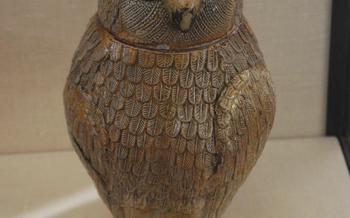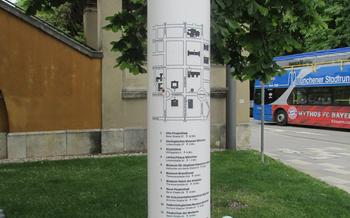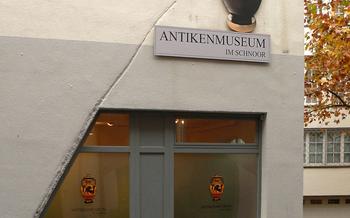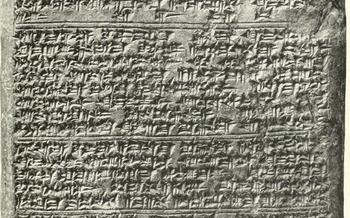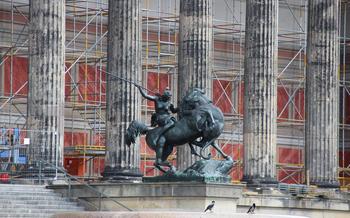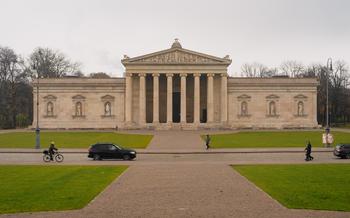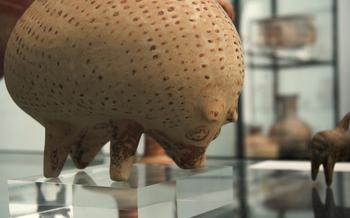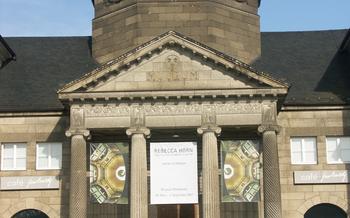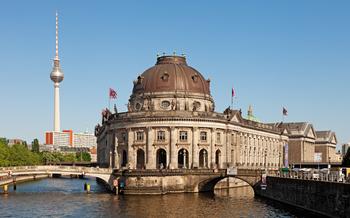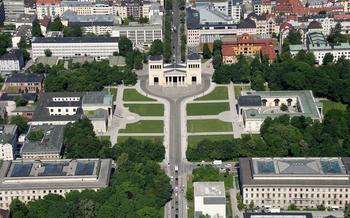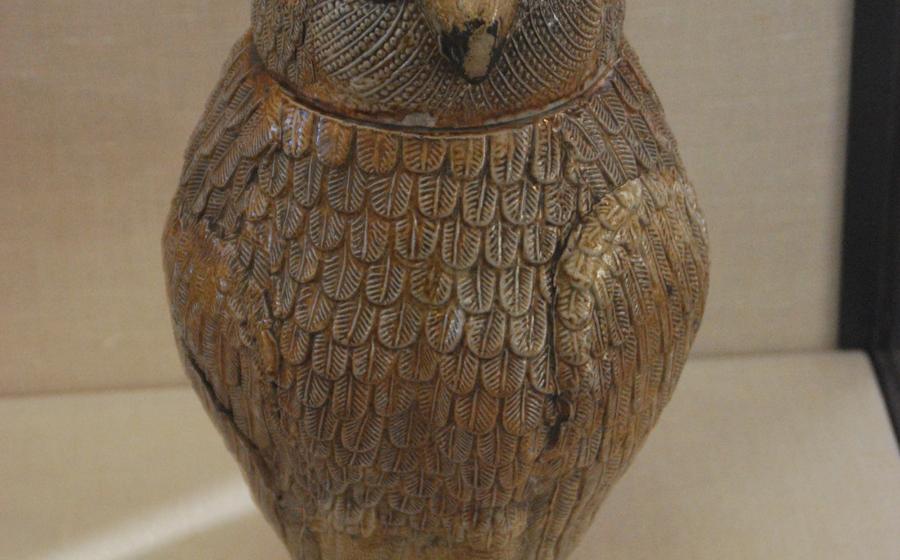
Museum August Kestner
- Historical Background
- Location and Accessibility
- Collections and Exhibits
- Ancient Egyptian Collection
- Greek and Roman Collections:
- Special Exhibitions
- Educational Programs
- Museum Shop
- Accessibility
- Hours of Operation and Admission Fees
- Photography and Videography
- Food and Beverage
- Nearby Attractions
- Insider Tip: Unveiling the Secrets of the Kestner Museum
Historical Background
The Museum August Kestner, a treasure trove of ancient art and artifacts, owes its existence to the passion and dedication of its namesake, August Kestner. Born in Hanover in 1777, Kestner was a multifaceted individual who served as a diplomat, archaeologist, and art collector. His diplomatic career took him to Rome, where he developed a deep appreciation for classical antiquities. Upon his return to Hanover, Kestner resolved to establish a museum that would showcase his extensive collection of ancient artifacts.
The museum's foundation in 1889 marked a significant milestone in the cultural landscape of Hanover. Kestner's vision was to create a space where the public could engage with the rich heritage of ancient civilizations, particularly those of Egypt, Greece, and Rome. The museum's collection, meticulously curated by Kestner himself, reflected his discerning eye and his commitment to preserving and sharing the wonders of the ancient world.
The Museum August Kestner's significance lies in its role as a repository of ancient treasures that offer a glimpse into the lives and cultures of past civilizations. Its collection of Egyptian mummies, Greek vases, and Roman sculptures provides invaluable insights into the artistic achievements, religious beliefs, and everyday lives of these ancient societies. The museum stands as a testament to Kestner's legacy and his enduring passion for preserving and celebrating the cultural heritage of humanity.
Location and Accessibility
The Museum August Kestner is conveniently located in the heart of Hanover, at Trammplatz 3, 30159 Hannover. It is easily accessible by public transportation, with several tram and bus lines stopping nearby. The nearest tram stop is "Aegidientorplatz", which is served by lines 3, 7, and From there, it is just a short walk to the museum. For those arriving by car, there is limited street parking available in the surrounding area. The museum is wheelchair accessible, with ramps and elevators providing access to all levels of the building. The museum also offers audio guides for the visually impaired, ensuring that everyone can enjoy the collections.
Collections and Exhibits
The Museum August Kestner is renowned for its diverse and comprehensive collection of artifacts from ancient Egyptian, Greek, and Roman civilizations. Visitors can marvel at the intricately carved Egyptian statues, which provide a glimpse into the religious beliefs and funerary practices of ancient Egypt. The collection also includes a fascinating array of mummies and sarcophagi, offering insights into the elaborate burial rituals of this ancient civilization.
The museum's Greek collection boasts an impressive array of pottery, including vases, amphorae, and drinking vessels, each adorned with intricate scenes from Greek mythology and daily life. These artifacts showcase the exceptional craftsmanship and artistic prowess of ancient Greek artisans. The museum also houses a notable collection of Greek sculptures, including statues of gods, goddesses, and heroes, which provide a glimpse into the religious and cultural beliefs of ancient Greece.
The Roman collection features a variety of sculptures, mosaics, and jewelry, showcasing the artistic achievements and cultural influences of the Roman Empire. Visitors can admire the intricate details and lifelike expressions of Roman portrait sculptures, which offer a glimpse into the lives and personalities of ancient Romans. The collection also includes a fascinating array of Roman glass and metalwork, demonstrating the technological advancements and artistic skills of this powerful civilization.
Ancient Egyptian Collection
The Museum August Kestner is renowned for its extensive collection of ancient Egyptian artifacts, which provides visitors with a glimpse into the rich culture and beliefs of this ancient civilization. The collection boasts an impressive array of mummies, sarcophagi, and hieroglyphic inscriptions, offering a fascinating insight into Egyptian funerary practices and religious beliefs.
Among the highlights of the collection is the intricately decorated sarcophagus of the priestess Tabakenkhonsu, dating back to the 26th Dynasty. The sarcophagus, adorned with colorful hieroglyphs and images of deities, provides a vivid representation of ancient Egyptian funerary art. Another notable piece is the mummy of a young woman named Meresamun, which has been preserved in remarkable condition and offers visitors a rare opportunity to witness the mummification process firsthand.
The museum's collection also includes a variety of everyday objects, such as pottery, jewelry, and tools, which provide a glimpse into the daily lives of ancient Egyptians. These artifacts shed light on their customs, traditions, and technological advancements. Visitors can admire the exquisite craftsmanship and artistic skill that went into creating these objects, which have survived for thousands of years.
By exploring the ancient Egyptian collection at the Museum August Kestner, visitors can gain a deeper understanding of this ancient civilization's rich history, culture, and beliefs. The artifacts on display offer a tangible connection to the past, allowing visitors to experience the grandeur and mystery of ancient Egypt firsthand.
Greek and Roman Collections:
The Museum August Kestner boasts an impressive collection of Greek and Roman artifacts that transport visitors back to the ancient world. Among the highlights are the exquisite Greek vases, adorned with intricate scenes from mythology and everyday life. These vases provide a glimpse into the artistic prowess and storytelling traditions of ancient Greece.
The museum's Roman collection is equally captivating, featuring a range of sculptures, mosaics, and jewelry. These artifacts showcase the Romans' mastery of craftsmanship and their eclectic artistic influences. Visitors can admire the lifelike expressions and intricate details of Roman portrait sculptures, as well as the vibrant colors and intricate patterns of Roman mosaics.
One of the most remarkable pieces in the collection is a marble statue of the goddess Aphrodite, known as the "Venus of Hanover." This exquisitely carved sculpture embodies the ideals of classical beauty and grace, showcasing the goddess's serene countenance and flowing drapery.
The Greek and Roman collections at the Museum August Kestner offer a fascinating journey through the art and culture of two of the most influential civilizations in history. These artifacts provide a tangible connection to the past and invite visitors to explore the rich legacy of ancient Greece and Rome.
Special Exhibitions
The Museum August Kestner regularly hosts special exhibitions that explore specific themes or showcase the work of renowned artists. These exhibitions offer visitors an opportunity to delve deeper into the museum's collections and gain new perspectives on ancient civilizations.
Upcoming special exhibitions at the museum include:
-
"The Art of Ancient Egypt: From Pharaohs to Pyramids" (March 2023 - June 2023): This exhibition will showcase a collection of over 200 artifacts from ancient Egypt, including sculptures, jewelry, and hieroglyphic inscriptions. Visitors will learn about the history, culture, and religion of ancient Egypt through these fascinating objects.
-
"Greek Myths and Legends: From Mount Olympus to the Underworld" (September 2023 - December 2023): This exhibition will explore the rich mythology of ancient Greece through a collection of vases, sculptures, and other artifacts. Visitors will encounter the gods and goddesses of Mount Olympus, as well as the heroes and monsters of the underworld.
Don't miss these exciting special exhibitions at the Museum August Kestner! Check the museum's website for more information on these and other upcoming exhibitions.
Educational Programs
The Museum August Kestner offers a variety of educational programs designed to engage visitors of all ages with the museum's collections and exhibitions. Guided tours are available in German and English, providing visitors with in-depth insights into the history, significance, and cultural context of the artifacts on display. These tours are led by knowledgeable museum educators who are passionate about sharing their expertise with the public.
In addition to guided tours, the museum also offers workshops, lectures, and special events throughout the year. These programs cover a wide range of topics related to ancient civilizations, art history, and archaeology. Workshops often provide hands-on experiences, allowing participants to learn about ancient techniques and create their own works of art inspired by the museum's collection. Lectures are given by renowned experts in their respective fields, offering visitors the opportunity to gain new perspectives and insights into the ancient world.
I had the pleasure of attending a workshop on ancient Egyptian hieroglyphics at the museum. The workshop was led by an experienced Egyptologist who taught us about the history and development of the hieroglyphic writing system. We were able to practice writing our own names in hieroglyphs and learn about the meanings behind the symbols. The workshop was informative, engaging, and a lot of fun.
Whether you are a student, a history buff, or simply someone who wants to learn more about ancient civilizations, the Museum August Kestner's educational programs offer something for everyone. These programs are a great way to deepen your understanding of the museum's collections and gain a new appreciation for the rich cultural heritage of the ancient world.
Museum Shop
The Museum August Kestner also houses a well-stocked museum shop where visitors can find a variety of unique and interesting items to purchase as souvenirs or gifts. The shop offers a wide range of books on ancient Egyptian, Greek, and Roman art and culture, as well as postcards, posters, and replicas of ancient artifacts. Visitors can also find a selection of jewelry, pottery, and other decorative items inspired by ancient civilizations.
One of the most popular items in the museum shop is the replica of the famous Nofretete bust. This life-size bust of the Egyptian queen is made from high-quality resin and is a must-have for any fan of ancient Egyptian art. Another popular item is the replica of the Parthenon frieze, which depicts the procession of the Panathenaic festival in ancient Athens. This frieze is made from plaster and is a great way to bring a piece of ancient Greece home with you.
The museum shop also offers a variety of educational toys and games for children, such as puzzles, building blocks, and coloring books. These toys are a great way to teach children about ancient civilizations while also keeping them entertained.
Whether you are looking for a unique souvenir or a gift for a friend or family member, the Museum August Kestner shop is sure to have something for you.
Accessibility
The Museum August Kestner is committed to providing an inclusive and accessible experience for all visitors, regardless of their abilities or disabilities. The museum features a range of accessibility features to ensure that everyone can enjoy its collections and exhibits.
Wheelchair ramps and elevators are available throughout the museum, making it easy for visitors with mobility impairments to navigate the galleries and public spaces. The museum also offers audio guides for the visually impaired, providing detailed descriptions of the exhibits and artifacts. These audio guides are available in multiple languages to accommodate visitors from different backgrounds.
In addition, the museum staff is trained to assist visitors with disabilities and provide any necessary support. Visitors with specific accessibility needs are encouraged to contact the museum in advance to make arrangements and ensure a smooth and enjoyable visit. The museum's commitment to accessibility demonstrates its dedication to creating a welcoming and inclusive environment for all visitors.
Hours of Operation and Admission Fees
The Museum August Kestner welcomes visitors throughout the week, except on Mondays when it remains closed. From Tuesday to Sunday, the museum's doors are open from 10:00 AM to 5:00 PM, providing ample time to explore its captivating collections. It's important to note that the museum may have special hours or closures during holidays or special events, so checking the official website or contacting the museum directly is recommended before planning your visit.
Admission fees at the Museum August Kestner are reasonable and designed to make ancient art and history accessible to all. Standard admission for adults is set at a modest rate, while discounted rates are available for students, seniors, and groups. Children under the age of 18 enjoy free admission, making it an excellent opportunity for families to immerse their young ones in the wonders of ancient civilizations. Additionally, the museum offers free admission on the first Wednesday of every month, allowing visitors to experience the museum's treasures without any financial burden.
Photography and Videography
The Museum August Kestner encourages visitors to capture their memories and share their experiences through photography and videography. However, to ensure the preservation of the artifacts and the enjoyment of all visitors, certain guidelines must be followed. Flash photography and tripods are not permitted within the exhibits, as they can damage the delicate objects on display. Visitors are also requested to be mindful of other visitors and avoid blocking their views or causing disruptions.
It's important to note that some exhibits or artifacts may have specific photography restrictions due to conservation concerns or copyright issues. Visitors are advised to check with museum staff or signage for any special guidelines or restrictions that apply to particular exhibits.
By adhering to these guidelines, visitors can help protect the museum's collection while still capturing their own personal memories of their visit.
Food and Beverage
The Museum August Kestner offers a delightful café within its premises, providing visitors with a comfortable space to relax and recharge during their visit. The café serves a variety of snacks, sandwiches, pastries, and beverages, including hot and cold drinks. Visitors can enjoy their refreshments indoors or outdoors, taking in the beautiful views of the surrounding gardens.
However, it is important to note that food and drinks are not permitted inside the museum's galleries. This restriction aims to preserve the integrity of the artifacts and ensure a safe and enjoyable environment for all visitors. Therefore, it is advisable to finish your snacks or drinks before entering the exhibition spaces.
If you are looking for a more substantial meal before or after your visit to the museum, there are several restaurants and cafés located nearby. Within a short walking distance, you can find a variety of dining options to suit different tastes and budgets, ranging from traditional German cuisine to international fare.
Whether you choose to enjoy a quick bite at the museum's café or explore the culinary delights of the surrounding area, you are sure to find something to satisfy your hunger and enhance your overall experience at the Museum August Kestner.
Nearby Attractions
The Museum August Kestner is situated in the heart of Hanover, surrounded by a wealth of other cultural attractions and historical landmarks. Just a short walk from the museum, visitors can explore the stunning Hanover Opera House, renowned for its world-class performances and architectural beauty. The nearby Sprengel Museum is another must-see, showcasing a vast collection of modern and contemporary art, including works by Picasso, Kandinsky, and Niki de Saint Phalle.
For those interested in history, the Old Town Hall (Altes Rathaus) is a must-visit. This magnificent building, dating back to the 15th century, houses the City History Museum, which offers a fascinating glimpse into Hanover's rich past. The nearby Markthalle, a bustling indoor market, is a great place to experience the city's vibrant culinary scene and pick up some local delicacies.
Nature enthusiasts can escape the urban hustle and bustle at the Herrenhäuser Gardens, located just a short distance from the museum. These beautifully landscaped gardens, dating back to the 17th century, offer a tranquil oasis with stunning flower displays, sculptures, and fountains. Visitors can stroll through the gardens, admire the Baroque architecture, and even take a boat ride on the lake.
Insider Tip: Unveiling the Secrets of the Kestner Museum
Beyond the renowned collections, the Museum August Kestner holds a hidden gem that often goes unnoticed by visitors: the secret room. Tucked away in a discreet corner of the museum, this room houses a collection of rare and enigmatic artifacts that are not on display to the general public. To gain access to this hidden treasure, visitors must inquire at the information desk and request a special viewing. The museum staff will then escort them to the secret room, where they can marvel at ancient relics, forgotten treasures, and intriguing objects that tell untold stories of history and culture. Whether it's a mysterious amulet, a forgotten manuscript, or a peculiar sculpture, the secret room offers a glimpse into the museum's hidden depths and provides a unique and unforgettable experience for those who seek it.
